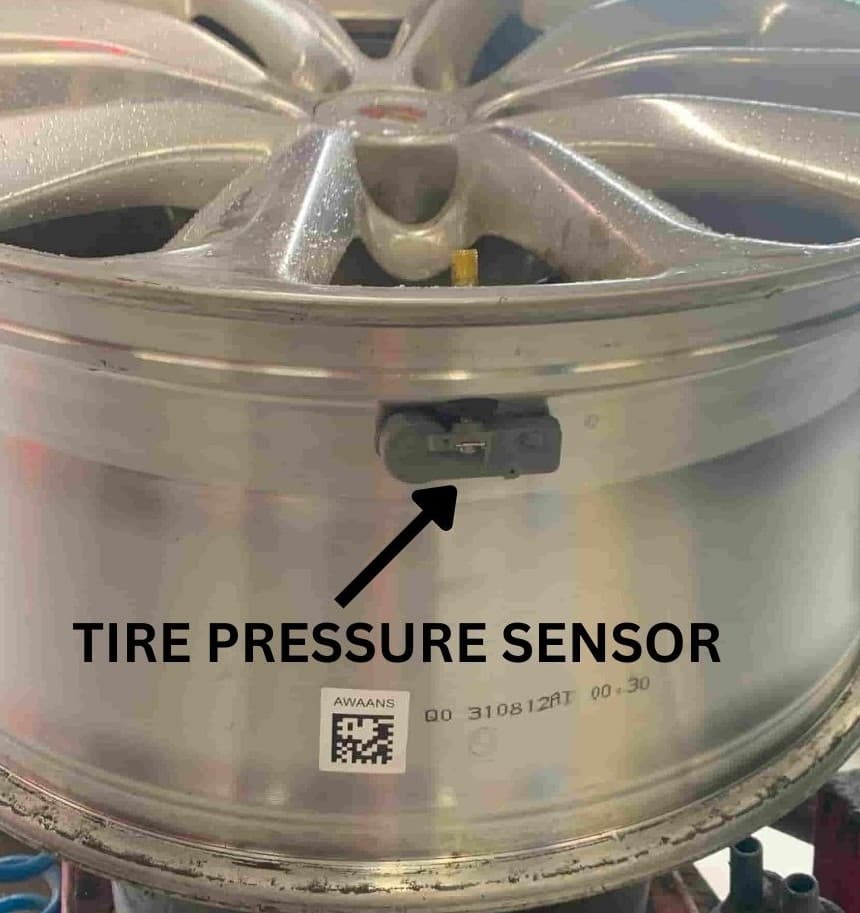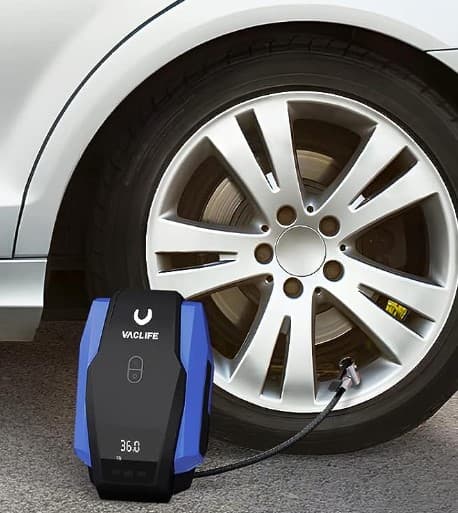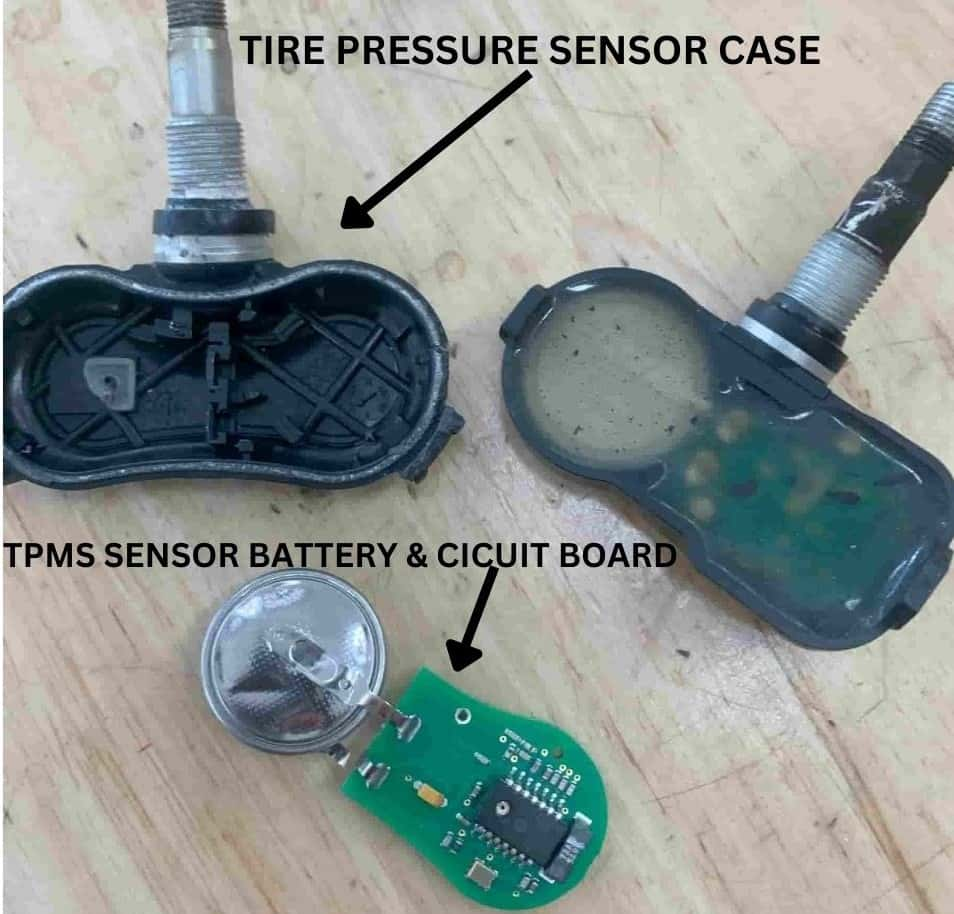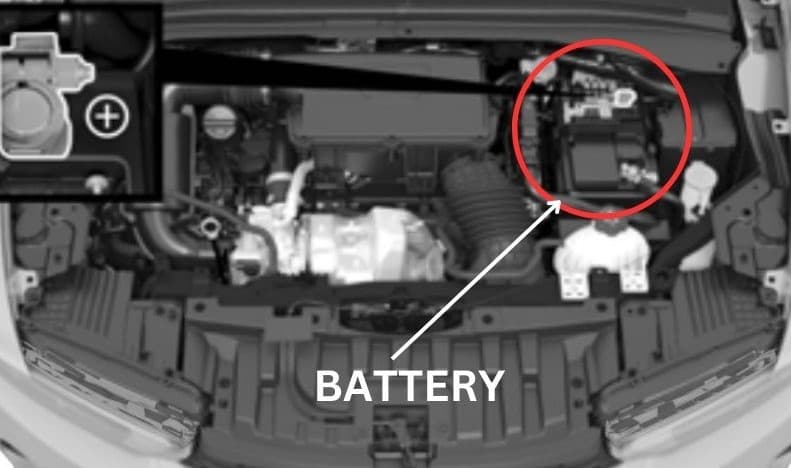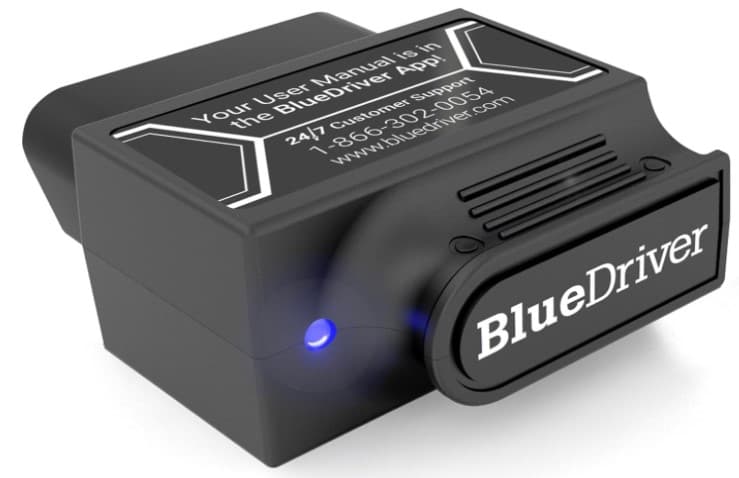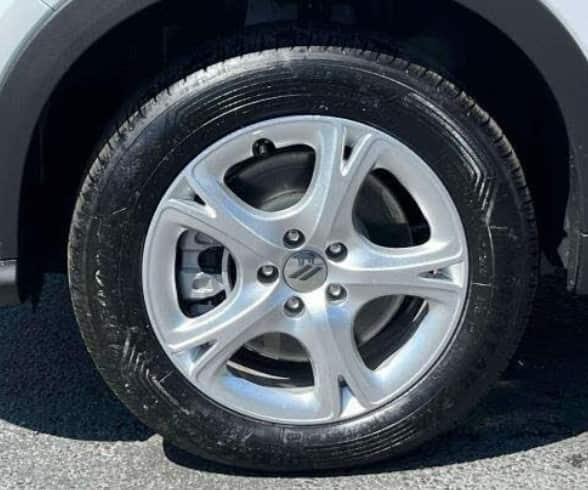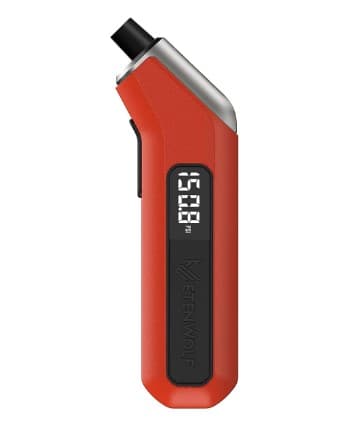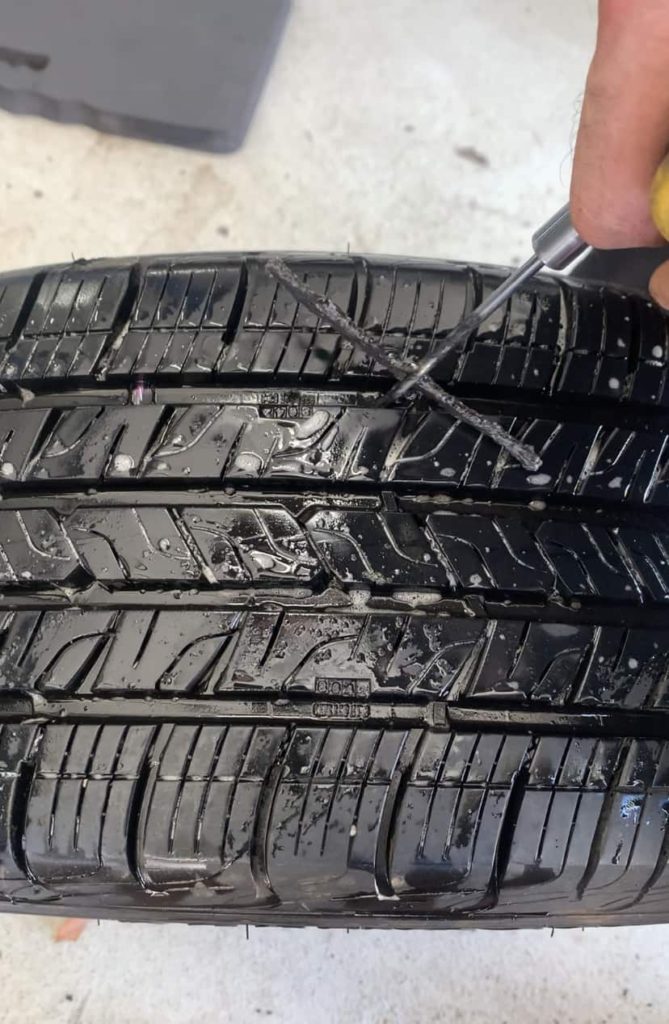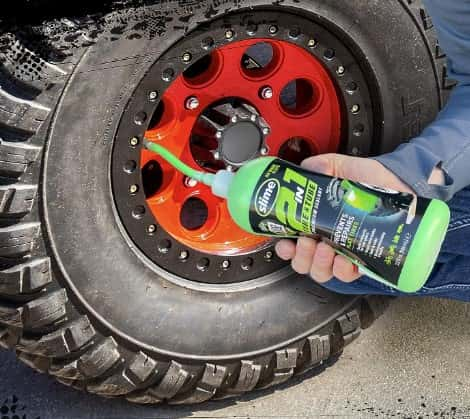What is the Dodge Hornet Tire Pressure Monitoring System?
One of the most underrated features of the Dodge Hornet is the tire pressure monitoring system (TPMS). Given that tires play a crucial role in a vehicle’s performance, maintaining them becomes of paramount importance. The tire pressure monitoring system exists to relay the current tire pressure and temperature to the driver as well as warn the driver when there is an issue with one or more of the tires. The Dodge Hornet TPMS is a system made up of sensors and computers, here’s how it works:
How Does the Dodge Hornet TPMS Work?
Tire Pressure Sensors: Embedded within each Dodge Hornet tire, these sensors continuously measure the air pressure and temperature of the tire. The sensor is not visible unless the tire is removed from the wheel but it is attached to the base of the valve stem. The sensor part is a circuit board with an antenna attached to a battery all housed in a plastic case.
Data/Information Transmission: The sensors transmit this real-time data wirelessly to the vehicle’s computer system using radio waves. The sensors transmit on either 315 Mhz or 433 Mhz frequency bands.
TPMS Receiver Module: This module acts as an intermediary, receiving the data from the sensors and processing it for the Hornet’s main computer.
Dodge Hornet ECM (Engine Control Module): The ECM processes the received data and determines if the tire pressure is within the recommended range.
Low Pressure Warning Light: If the ECM detects a pressure that’s too low, it triggers the low pressure warning light on the dashboard as well as an audible chime sound to alert the driver to the issue. The Dodge Hornet information display will also let the driver know which tire is low and what pressure to inflate it to with a message “Tire Low Inflate to XX PSI”
Self Diagnostic Function: The Dodge Hornet TPMS is also capable of letting the driver know when there’s an issue with the TPMS itself. If a tire pressure sensor is not communicating with the Hornet’s ECM, the low tire pressure indicator will flash and the information display will read “SERVICE TPM SYSTEM” (read more about this below)
Steps to REset the Dodge Hornet TPMS
Park the Dodge Hornet on a level surface.
Set all 4 tires to the exact recommended air pressures when the tires are cold.
Drive the Dodge Hornet for at least 20 minutes at speeds above 15 Mph (24 km/h).
How to Deactivate the Dodge Hornet TPMS
You can deactivate the Dodge Hornet TPMS if you replace the OEM wheels with wheels without tire pressure sensors installed. This is how:
Replace all 4 wheels with wheels that do not have tire pressure sensors installed.
Drive the Dodge Hornet for at least 20 minutes over 15 Mph.
The tire pressure system will make a chime sound and the TPMS warning light will blink on and off for about a minute and then stay on.
A message on the display will read “SERVICE TPM SYSTEM” and ~ will replace tire pressure values.
Turn the engine OFF.
Turn the engine ON.
The “SERVICE TPM SYSTEM” message will be gone but the ~ dashes will still be there instead of air pressure numbers.
How to Reactivate the Dodge Hornet TPMS System
Put all 4 OEM wheels with the TPMS sensors back on the Dodge Hornet.
Drive the Dodge Hornet for 20 minutes at speeds over 15 Mph.
The tire pressure system will make a chime sound, the TPMS light will flash on and off for about a minute and then stay off.
Cycle the engine on and off.
Drive the Hornet again and the tire pressure values will be displayed instead of the dashes (~).
What Can Trigger the Dodge Hornet Low Tire Pressure Light
Tires that are under-inflated
Overfilled tires
Tires leaking air
Missing tire pressure sensors (like when using the spare tire)
Worn-out or malfunctioning TPMS sensor battery
Issues with the TPMS receiver unit or vehicle’s ECM
Interference from nearby electronics or vehicles using similar radio frequencies
Changes in atmospheric weather conditions or altitude
Overloading the vehicle
Employing tire chains
Thick window tints
Changes in road surface temperatures
Dodge Hornet Tire Pressure Sensor Batteries
Every tire pressure sensor within each wheel of the Dodge Hornet is made up of a small circuit board, an antenna, and a small silver-oxide battery. The battery is directly connected to the circuit board which means they are non-replaceable or rechargeable. When the tire pressure sensor runs out of power, the entire sensor has to be replaced. Dodge Hornet tire pressure sensors should last anywhere from 5-10 years or about 100,000 miles of driving.
Diagnosing the Dodge Hornets Tire Pressure Light Issues
For many reasons, sometimes the Dodge Hornet tire pressure light will not turn off after following the TPMS reset procedure. Troubleshooting the low tire pressure light is mostly trial and error until you narrow down the cause. If you find yourself in this situation, we suggest attempting one or all of these possible tire pressure light solutions:
SOLUTION 1: IS A TIRE DELFATING OR LEAKING AIR PRESSURE?
When the low tire pressure warning light turns on, the first step is to find out if a tire is losing air pressure from an air leak. This is usually the cause if only 1 out of 4 tires has less air then the others. To be sure, follow these steps:
Park the Dodge Hornet on level ground and visually inspect each tire for any abnormalities.
Determine the recommended tire pressure and inflate the tire that’s low on air. Be sure to fill the tire to the exact recommended pressure.
Drive the car for 20 minutes at speeds over 15 Mph, the tire light will turn off.
⏩CONCLUSION: If the tire light turns back on after driving, whether it happens immediately or days later, and the same tire is the culprit, that tire is losing air from a leak. Check out SOLUTION 6 to find the leak location.
SOLUTION 2: HOW TO CLEAR DIAGNOSTIC TROUBLE CODES FROM THE DODGE HORNET ECM
When the low tire pressure light turns on, the Doge Hornet computer records this as a diagnostic trouble code (DTC) and stores it in its memory. If you believe the tire pressure light is on because of a glitch, you can power off and then power on the car’s computer in an attempt to restart and erase the low tire pressure DTC. Follow these steps:
Check and adjust the tire pressures in all tires to the exact recommended cold values.
Turn the Hornet engine and power off. Make sure all electronics are off.
Pop the hood and disconnect the negative battery terminal.
Wait a few moments and then reconnect the negative battery terminal.
Drive the Dodge Hornet for 20-30 minutes at a consistent speed of 50 Mph to recalibrate the sensors.
⏩ WHAT’S NEXT: If the tire pressure light turns off after restarting the Dodge Hornet computer but then turns back on as you drive, you either have a tire losing air or one or more tire pressure sensors are no longer communicating with the ECM. This is usually because a sensor is low on battery power. Use SOLUTION 3 to determine which tire pressure sensor is not working properly.
SOLUTION 3: DIAGNOSING TIRE PRESSURE SENSORS WITH A TPMS PROGRAMMING TOOL
If you believe you have a faulty tire pressure sensor, you can test the functionality of each sensor using a TPMS programming/diagnostic tool.
Plug the TPMS programming tool into the Dodge Hornet OBD2 port under the steering wheel.
Follow the tools on screen instructions.
Place the programming tool directly in front of the driver-side front tire valve stem and select the “trigger” or “test” function on the tool.
Wait for the tool to respond and then test each of the remaining tire pressure sensors in the order the tool requests.
⏩ OUTCOME: After testing each tire pressure the TPMS programming tool will provide a report on each tire pressure sensor. If any of the pressure sensors are reporting inaccurate sensor information, unable to communicate with the programming tool, or report having a low or drained battery, that tire pressure sensor has to be replaced.
SOLUTION 4: REACTIVATING A DORMANT DODGE HORNET TPMS SENSOR
Tire pressure sensors can become inactive. To attempt to reactivate a tire pressure sensor follow these steps:
Release air from the tire causing the issue. Press the valve stem core.
Release 15-0 Psi from the tire.
Inflate and adjust the tire pressure to 5 Psi above the recommended pressure.
Drive the Dodge Hornet for 20 minutes above 15 Mph.
After driving, stop and readjust the pressure back to the recommended air values.
⏩ WHAT TO KNOW: Use this solution and then follow the standard tire pressure reset procedure.
SOLUTION 5: INTERMITTENT ACTIVATION OF THE DODGE HORNET TIRE LIGHT
Because air temperature has such a significant impact on tire air pressure, depending on where you live you may notice your tire pressure light activates and then deactivates by itself. This is common when air temperatures drop overnight or between seasons.
⏩ WHAT TO DO: To resolve this issue, wait for the Dodge Hornet tires to be cold, (before driving) and then set and adjust the tire pressure. Adjusting tire pressure when the tires are cold is the only way to ensure accurate tire pressure readings.
SOLUTION 6: LOCATING THE SOURCE OF THE TIRE'S AIR LOSS
If you have a tire leaking air, this is a simple way to find where the tire is leaking from.
What You Need: Tire inflator, spray bottle, water, soap.
How to Find the Leak:
Fill the tire with air to at least 35 Psi.
Mix the water and soap into the spray bottle.
Spray and soak the entire tire with the water/soap mixture.
Visually examine the tire for small bubbles protruding from the tire surface.
⏩ ANSWER: Find the small air bubbles on the tire surface and you have found the location of the tire leak! Mark the tire leak location with chalk so you can easily plug or patch the puncture.
Understanding Temperature Effects on Dodge Hornet Tire Pressure
Air temperature plays a pivotal role in determining the air pressure of Dodge Hornet tires. Scientifically, when air heats up, it expands, and when it cools down, it contracts. This means that for every 12°F drop in temperature, the tire pressure in the Dodge Hornet may decrease by about 1-2 psi. Conversely, an increase in air temperature can cause the tire pressure to rise by the same amount. This phenomenon is often the cause for the low tire pressure light to turn on after a cold night or seasonal change. For example, if the temperature is 75°F in the day and drops to 45°F in the early morning, the Dodge Hornet tire pressure will decrease by about 3-6 Psi!
Common Dodge Hornet Tire Pressure Questions
HOW TO MANAGE TIRE PRESSURE SENSORS WHEN SWITCHING WHEELS
When replacing the Dodge Hornet tires you simply need to follow the TPMS reset procedure. If you replace the wheels/rims, the original tire pressure sensors need to be swapped over to the new wheels or you can replace the tire pressure sensors with new ones. If you replace the tire pressure sensors they will need to be programmed to the Dodge Hornet ECM via a TPMS programming tool. Make sure they use the same radio frequency as the OEM sensors!
HOW ALTITUDE AFFECTS THE DODGE HORNET'S TIRE PRESSURE
When driving a Dodge Hornet, it’s vital to understand that tire pressure can be influenced by changes in altitude. For every 1,000 feet ascent in elevation, tire pressure can decrease by about 0.5-1 psi due to the drop in atmospheric pressure. This means, if you’re scaling a mountain pass that rises 4,000 feet, the tires of your Dodge Hornet could lose approximately 2-4 psi. So, if you’re driving up a mountain and your low tire pressure light turns on, now you know why!
SHOULD YOU DRIVE THE DODGE HORNET WHEN THE TIRE LIGHT IS ON?
Driving the Dodge Hornet with the low tire pressure light on is typically not safe. If your tire pressure alert turns on, we suggest figuring out why. There are only two main culprits, either you have low tire pressure or one of your tire pressure sensors is no longer communicating with the Dodge Hornet ECM/ECU. Our recommendation is to stop driving, visually inspect each tire, manually check the air pressure and go through the troubleshooting solutions above.
HOW LONG CAN YOU DRIVE WITH THE TIRE PRESSURE LIGHT ON?
It depends – If the low tire pressure light is on because there is a tire with low air pressure, we suggest inflating it and determining why the tire is low on air immediately. If the low tire pressure light is on because a TPMS sensor is no longer communicating with the Dodge Hornet receiver module or ECM, this is technically not a vehicle safety issue. Instead you will no longer be made aware IF the tire is low on air because the tire pressure monitoring system will not be able to measure and report the tire pressures.
WHY IS THE DODGE HORNET TIRE LIGHT FLASHING?
If you see the tire light (yellow exclamation point) flash for about a minute and then stay on, every time you start the Dodge Hornet, this means there is a TPMS malfunction. A TPMS malfunction is not an air pressure issue but rather a fault or error within the tire pressure system components – sensors, receiver module or ECM. If the ECM cannot communicate with a tire pressure sensor then it triggers a TPMS malfunction. For example, when you drive with the spare tire on the Hornet, the ECM cannot communicate with it because it does not have a tire pressure sensor inside. The same thing will happen when a sensor battery is low because it can no longer communicate with the ECM. Try Solution 3 in the troubleshooting guide to find out why your TPMS is malfunctioning.
CAN TIRE PLUGS DEPENDABLY REPAIR PUNCTURES?
Tire plugs are very reliable for repairing tire punctures. Do not use tire plugs on the sidewall of a tire or if the tire tread is very worn.
WHAT'S THE IMPACT OF TIRE SEALANTS ON TIRE SENSORS?
Using a tire sealant (fix-a-flat) should only be used in a last resort situation. They may work temporarily but they can also damage the tire pressure sensor inside the tire and cause the tire to become imbalanced.
Everything in this article is applicable to all Dodge Hornet models and versions including the Dodge Hornet GT, GT Plus, R/T, and R/T Plus.
Please note that this blog post contains Amazon affiliate links. This means that if you make a purchase through one of these links, we at TPMSRESET.COM may earn a small commission at no extra cost to you. We only recommend products that we personally use and believe in. Thank you for supporting us.

